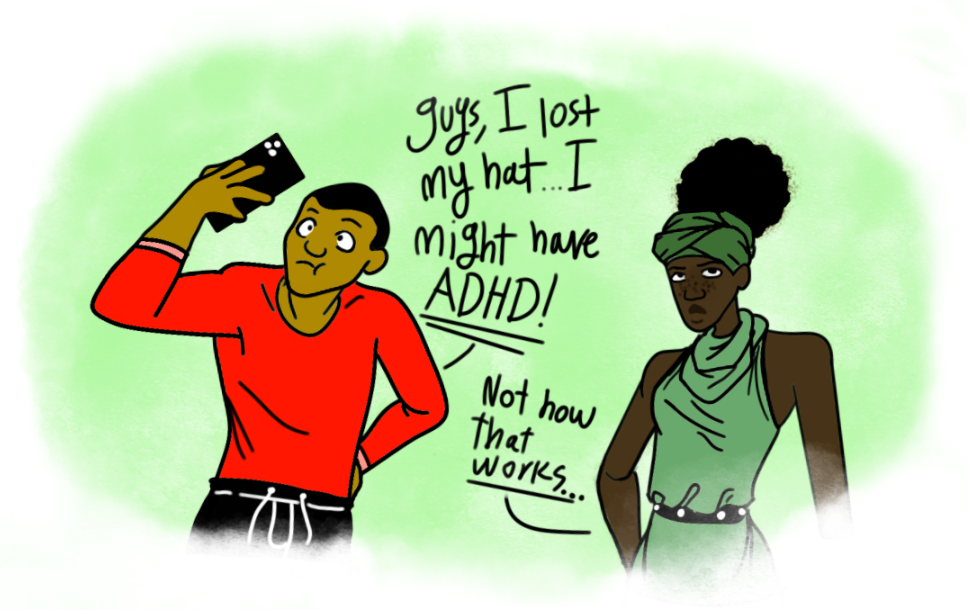A situation occurs in which a person misconstrues what Attention Deficit Hyperactive Disorder (ADHD) is, and another person corrects him. Mental illnesses and disorders have been stigmatized by society due to popular media and a general misunderstanding by neurotypical individuals. “While ignorance of the intricacies and nuances of mental health isn’t a new problem, a recent development has been the trend of neurotypical people exaggerating their behaviors and self-diagnosing for attention,” Starks wrote. Illustration by Antonio Starks
Mental illnesses are often stigmatized and misunderstood as a result of ignorant phrases that trivialize the experiences that those with mental illnesses may endure.
I am so OCD!” “That literally gave me PTSD.” “We all have a little ADHD!” These phrases have permeated contemporary society for quite some time. This thoughtless behavior downplays mental illness and creates a misinformed understanding of its realities within society.
While ignorance of the intricacies and nuances of mental health isn’t a new problem, a recent development has been the trend of neurotypical people exaggerating their behaviors and self-diagnosing for attention.
Mental illnesses are a wide range of conditions that affect mood, thinking and behavior, according to Mayo Clinic. These are serious, diagnosed aspects of someone’s health, but being mentally ill doesn’t only mean that someone feels sad or experiences a change in mood. The trivialization of mental illnesses and the normalization of this behavior is harmful to people who suffer from mental disorders as well as the people who make these “jokes”.
“Writing off group-based disparagement humor as ‘just jokes’ may serve to legitimize hierarchy-enhancing beliefs and assumptions that otherwise might have been considered socially unacceptable,” a 2020 article published in the International Journal of Humor Research stated.
According to a 2020 survey published on Statista, 30% of adults between the ages of 18-25 have some form of mental disorders such as depression, anxiety or ADHD. Along with this, nearly 50% of teens are diagnosed with a mental disorder, as reported by the National Institute of Mental Health (NIMH).
The number of people in high school who have mental health conditions makes it even more important for high school students to make the effort to understand those who have mental illnesses. Misunderstanding of mental illness can quickly become common as it’s cloaked in the veil of humor and normalizes the stigmatization of mental issues.
The number of people in high school who have mental health conditions makes it even more important for high school students to make the effort to understand those who have mental illnesses. Misunderstanding of mental illness can quickly become common as it’s cloaked in the veil of humor and normalizes the stigmatization of mental issues.
If one should come across someone who engages in this behavior, educating them on why making those kinds of jokes are wrong is a valid option. A simple explanation of how those statements can be harmful to people with mental health issues would benefit everyone involved.
This isn’t the responsibility of those with mental health issues, but it is the responsibility of neurotypical people to teach each other how to respect those with mental illnesses.
Tackling ignorance with indifference will simply allow uneducated ideas to swell and multiply across friend groups, close-knit communities and schools.
While it may just be all fun and jokes for some, trivializing mental illnesses can have upsetting effects on others emotionally, physically and mentally. One should educate themselves and others on the topic of mental illness and how to tell the difference between an adjective of one’s personality and a serious condition.
